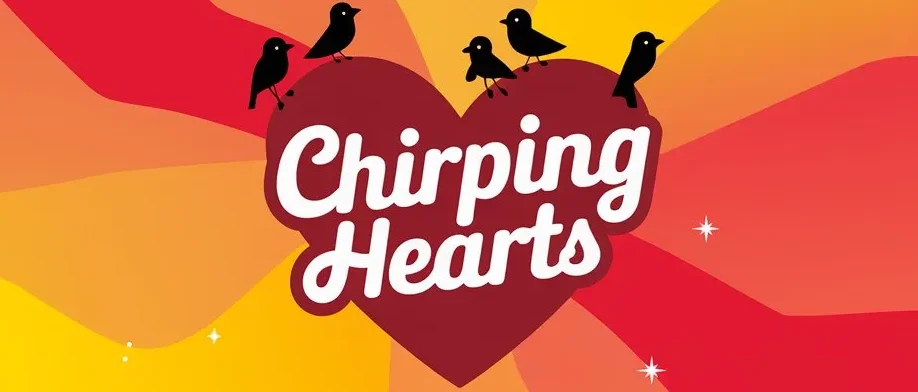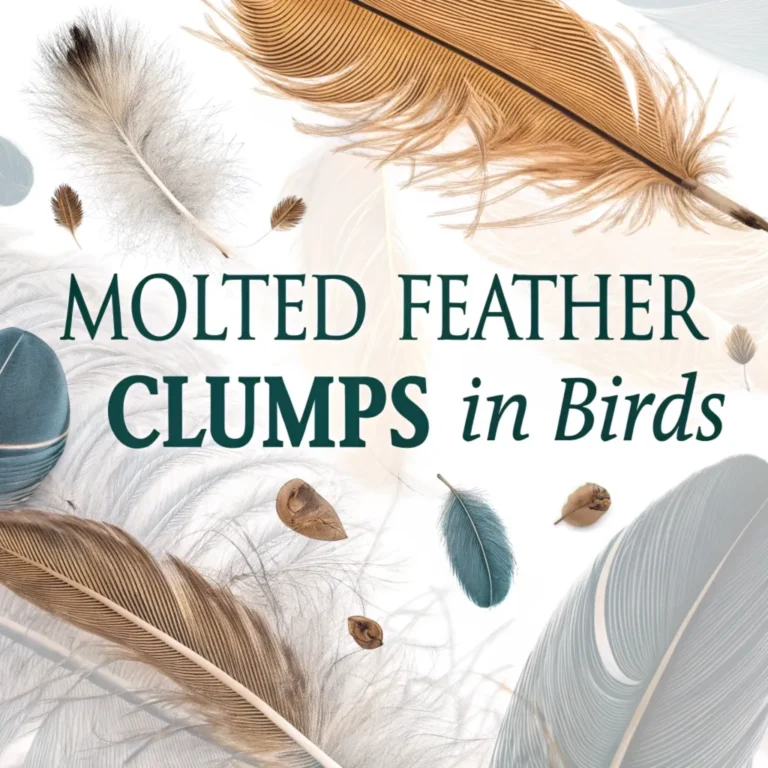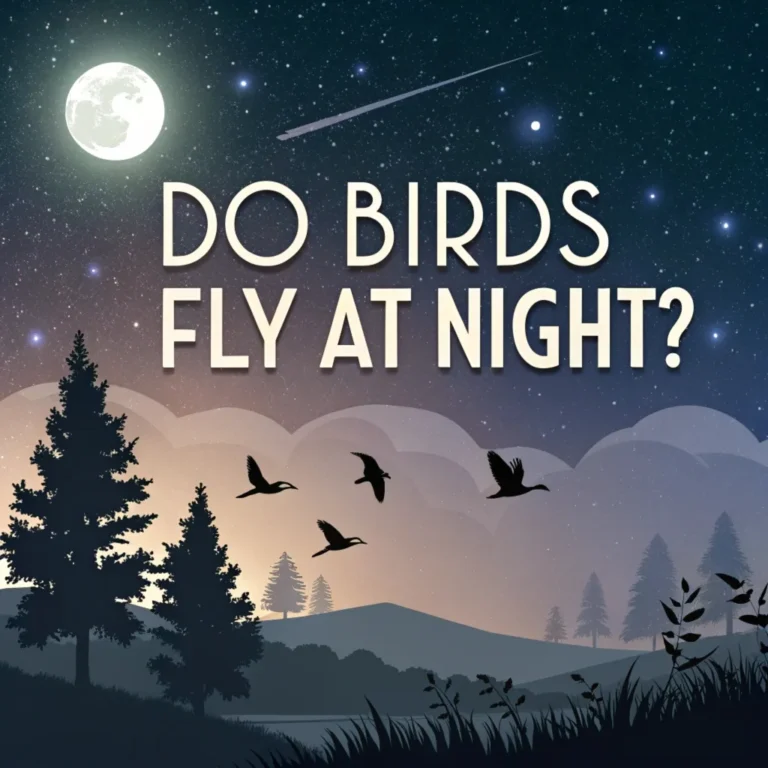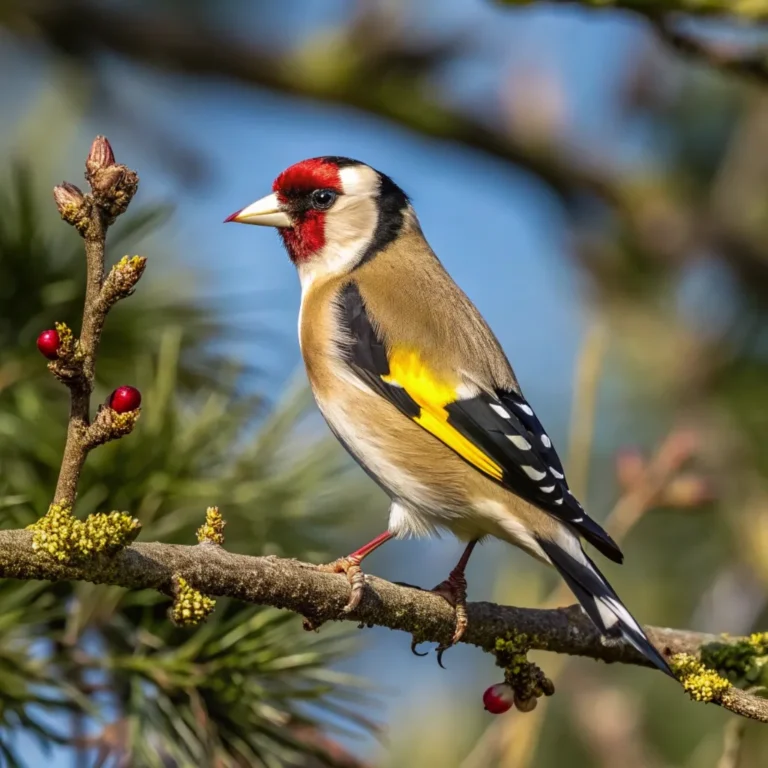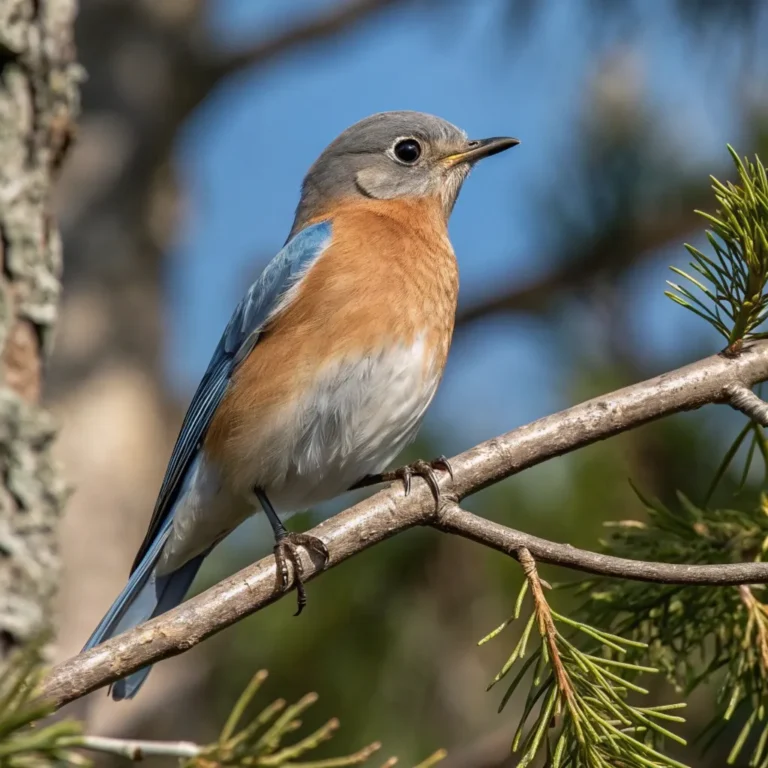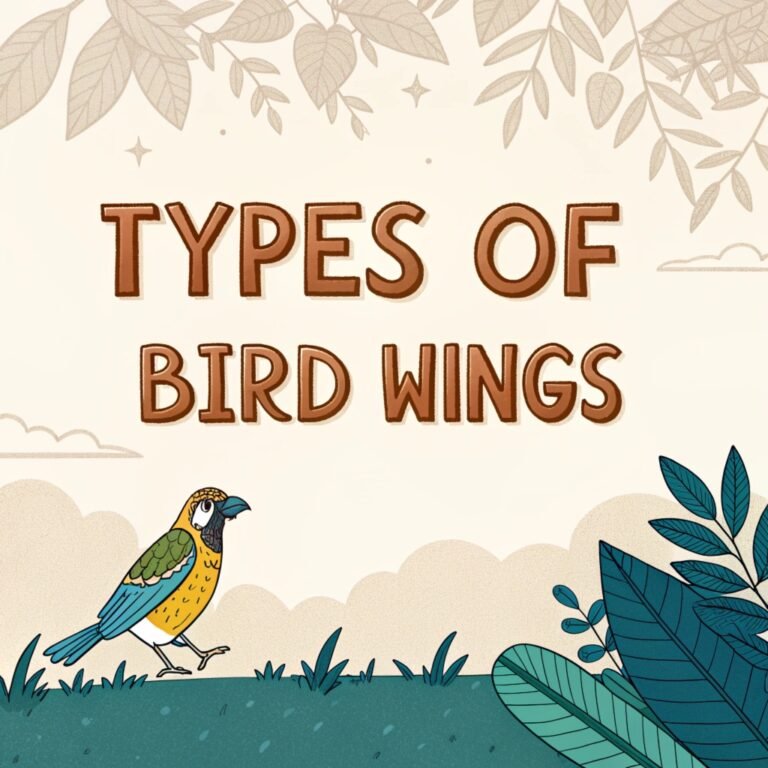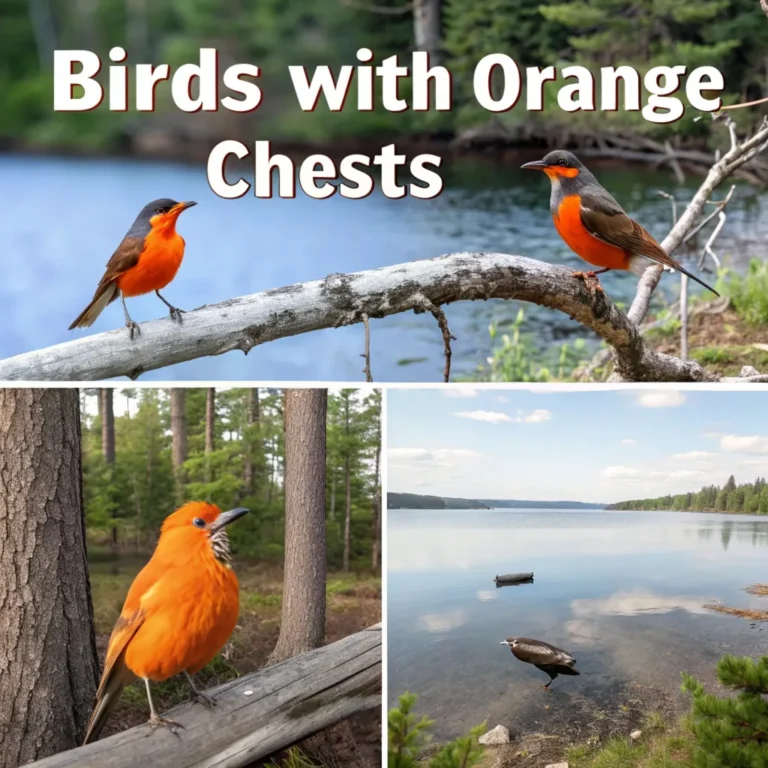Black Birds in Florida: Species and Identification Tips
Florida, with its diverse ecosystems and warm climate, is home to a wide variety of bird species, including several striking black birds.
From the iridescent Common Grackle to the bold Red-winged Blackbird, Florida’s black birds offer a glimpse into the beauty and diversity of avian life.
In this article, we’ll explore the most common black birds in Florida and provide practical identification tips to help you recognize them.

Key Takeaways: A Quick Guide to Florida’s Black Birds
- Florida hosts a variety of black bird species, ranging from small songbirds to large scavengers like vultures.
- Common species include the Red-winged Blackbird, Boat-tailed Grackle, and Common Grackle, each with unique features and behaviors.
- Identification tips focus on size, shape, behavior, color patterns, and habitat, which are crucial for distinguishing between similar-looking species.
- Black birds play essential ecological roles, including pest control, seed dispersal, and scavenging.
- Some species, like the Florida Scrub-Jay, are unique to the state and face conservation challenges due to habitat loss.
- Learning bird calls can also aid in identification; for example, the Red-winged Blackbird’s song is a distinctive “conk-la-ree!”
- Black birds adapt well to human environments, often seen in parks, agricultural fields, and urban areas.
- Understanding their diet—ranging from seeds and fruits to insects—can help attract them to your yard.
- Seasonal changes affect bird behavior, with some species forming large flocks during migration or winter months.
- Birdwatching gear like binoculars and field guides enhance your ability to identify these birds accurately.
Now that you have an overview, let’s dive deeper into the fascinating world of black birds in Florida!
The diversity of black birds in Florida reflects the state’s rich ecological tapestry. From the coastal regions to the inland swamps and forests, these birds have carved out niches that showcase their adaptability and resilience.
Their presence not only adds to the visual beauty of Florida’s landscapes but also serves as a barometer of environmental health, with changes in their populations often indicating shifts in habitat quality or climate patterns.
1. Common Grackle: The Iridescent Beauty

The Common Grackle is one of the most recognizable black birds in Florida. These medium-sized birds are known for their glossy plumage that shimmers with purple, green, or bronze hues under sunlight.
- Size & Appearance: Measuring 11–13 inches in length with an 18-inch wingspan, they appear solid black from a distance but reveal iridescent colors up close.
- Behavior: Grackles are social birds often seen in large flocks. They forage on the ground for grains, seeds, fruits, and even small invertebrates like frogs.
- Habitat: They thrive in various environments such as marshes, agricultural lands, and urban areas.
To identify a Common Grackle, look for its long tail and sharp bill. Its loud calls and bold presence make it hard to miss. Their adaptability ensures they’re spotted frequently across Florida’s urban landscapes.
Common Grackles are not just visually striking; they’re also intelligent and resourceful birds. Their ability to thrive in human-altered environments has made them a common sight in Florida’s cities and suburbs.
These birds have been observed using tools, such as dunking hard food in water to soften it, showcasing their problem-solving skills. Their presence in urban areas serves as a reminder of nature’s resilience in the face of human expansion.
Despite their abundance, Common Grackles face challenges in some regions due to habitat loss and climate change. In Florida, their populations have remained relatively stable, but conservationists monitor them closely.
These birds play a vital role in seed dispersal and insect control, making them an important part of Florida’s ecosystem.
By understanding and appreciating Common Grackles, we gain insights into the delicate balance of urban ecology and the importance of preserving green spaces in our cities.
2. Red-winged Blackbird: A Splash of Color
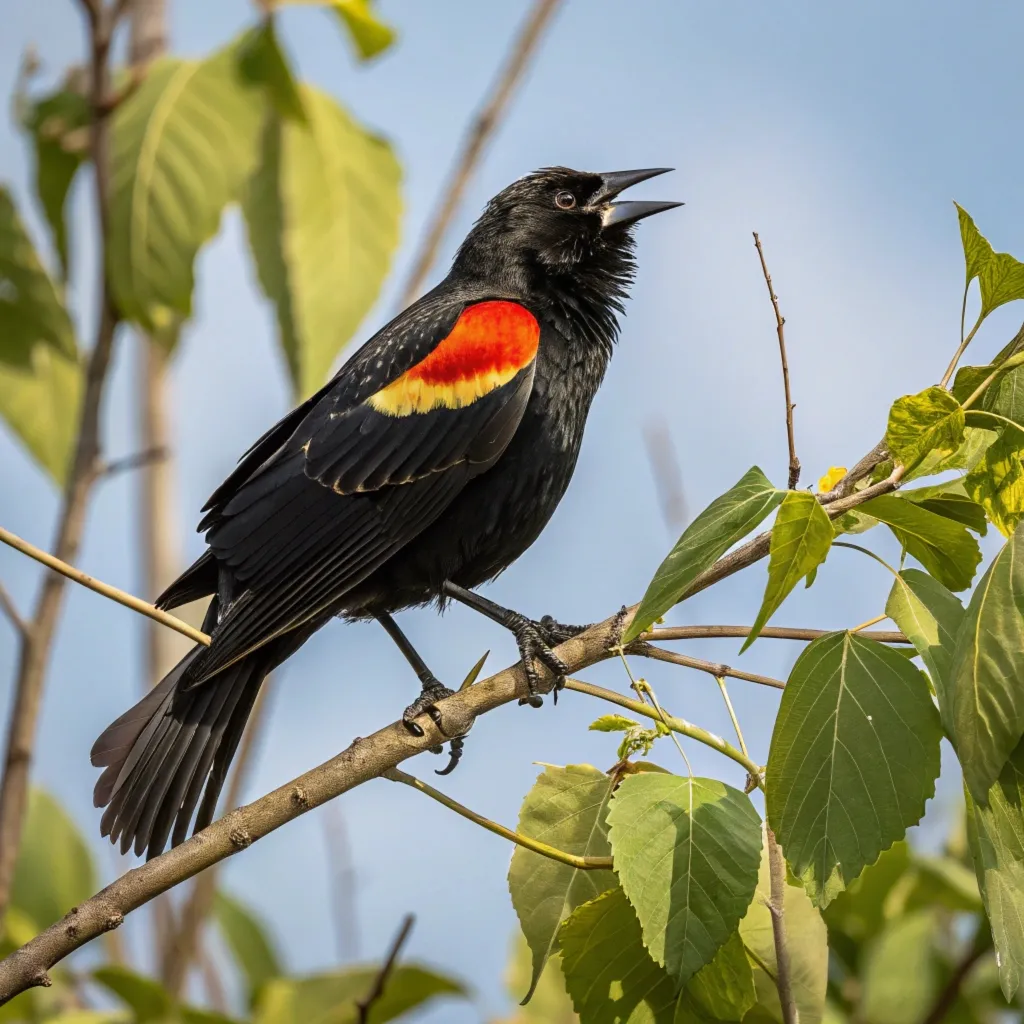
The Red-winged Blackbird is a striking species commonly found in wetlands across Florida. Males are easily identified by their red shoulder patches bordered with yellow.
- Size & Appearance: Males are jet black with bright red and yellow wing markings; females are streaky brown with subtle reddish tones on their wings.
- Behavior: Known for their territorial nature during breeding season, males often perch atop cattails or reeds while singing their iconic “conk-la-ree” song.
- Habitat: These birds prefer marshes but can also be found in grasslands and pastures during non-breeding seasons.
Their vibrant plumage and melodic calls make them a favorite among birdwatchers. They play an essential role in wetland ecosystems by controlling insect populations.
Red-winged Blackbirds are not just visually appealing; they’re also fascinating subjects for behavioral studies. Their polygynous mating system, where one male may have multiple female partners, offers insights into avian social structures.
During breeding season, male Red-winged Blackbirds fiercely defend their territories, creating a spectacular display of aerial acrobatics and vocal prowess that captivates observers.
The presence of Red-winged Blackbirds in Florida’s wetlands serves as an indicator of ecosystem health. These birds rely on healthy marsh habitats for nesting and feeding, making them sensitive to environmental changes.
Conservation efforts aimed at preserving Florida’s wetlands not only benefit Red-winged Blackbirds but also a myriad of other species that share their habitat.
By protecting these vibrant birds, we’re safeguarding the biodiversity and ecological balance of Florida’s precious wetland ecosystems.
3. Boat-tailed Grackle: The Coastal Specialist

Boat-tailed Grackles are larger relatives of the Common Grackle and are commonly found near water bodies.
- Size & Appearance: Males are glossy purple-black with long tails that resemble boat keels; females are smaller with brownish plumage.
- Behavior: These birds form harems during breeding season and are known for their loud chatter.
- Habitat: Look for them around marshes, beaches, or even urban areas where they scavenge for food.
Their adaptability makes them a common sight around busy places like parks or waterfronts. These grackles thrive near coastal areas where they find abundant food resources.
Boat-tailed Grackles are not just coastal dwellers; they’re skilled opportunists that have learned to exploit a variety of food sources. From scavenging human leftovers to foraging in tidal flats, these birds showcase remarkable adaptability.
Their presence along Florida’s coastlines adds a dynamic element to beach ecosystems, as they interact with other shorebirds and marine life. Observing their behavior offers insights into the complex relationships between species in coastal habitats.
The distinctive vocalizations of Boat-tailed Grackles contribute to Florida’s coastal soundscape. Their repertoire includes a variety of calls, from harsh squeaks to melodious whistles, which serve different purposes in communication.
These vocalizations play a crucial role in mate attraction, territory defense, and group cohesion.
By listening to and understanding these calls, birdwatchers can gain a deeper appreciation for the social dynamics of these intelligent birds and their role in Florida’s coastal ecosystems.
4. Brewer’s Blackbird: The Adaptable Forager
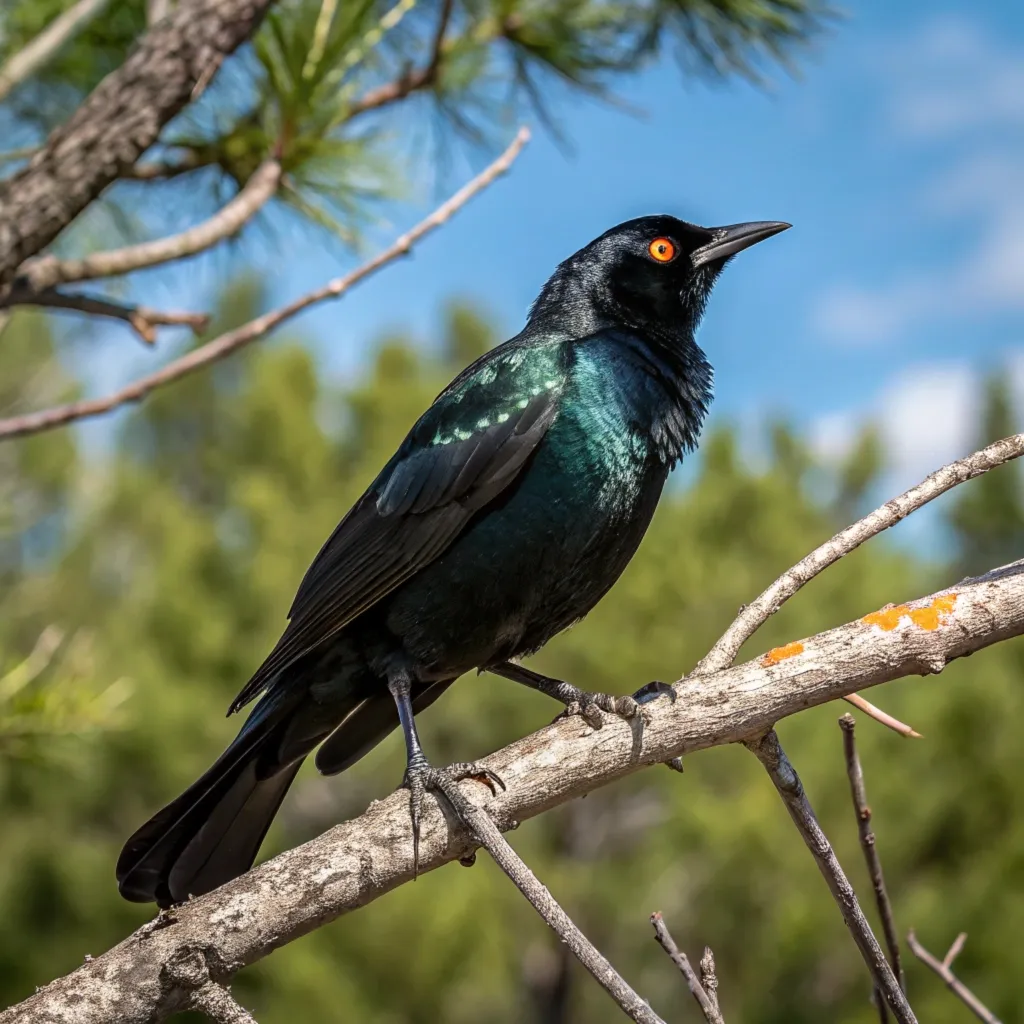
Brewer’s Blackbirds are smaller than grackles but equally fascinating.
- Size & Appearance: Males have glossy black feathers with hints of green; females are grayish-brown.
- Behavior: These birds often forage in mixed flocks alongside other blackbirds.
- Habitat: Found in meadows, grasslands, parks, and agricultural areas.
Listen for their metallic “ke-see” song when spotting them. Brewer’s Blackbirds exhibit remarkable resilience by adapting to both rural and urban settings.
Brewer’s Blackbirds demonstrate an impressive ability to thrive in diverse environments, from natural grasslands to human-altered landscapes. This adaptability has allowed them to expand their range and establish populations in areas where other species might struggle.
Their success in urban and agricultural settings highlights the importance of creating bird-friendly spaces in our communities, showing how even small green areas can support wildlife diversity.
The foraging behavior of Brewer’s Blackbirds offers a fascinating glimpse into avian intelligence. These birds are known to use a variety of techniques to find food, including following plows in agricultural fields to catch disturbed insects.
Their ability to form mixed-species flocks during non-breeding seasons showcases their social flexibility and the complex interspecies relationships in bird communities.
Observing these interactions can provide valuable insights into ecosystem dynamics and the ways different bird species coexist and cooperate.
5. European Starling: The Shimmering Invader

Although not native to Florida, European Starlings have established themselves as a common sight throughout the state.
- Size & Appearance: Their black feathers exhibit a green-purple sheen during breeding season; winter plumage includes white speckles.
- Behavior: Highly social birds that form massive flocks called murmurations.
- Habitat: Seen in urban areas, farmlands, and open fields.
Their adaptability has made them one of the most widespread bird species globally. Despite being invasive, they contribute to pest control by feeding on insects.
European Starlings in Florida represent a complex ecological story. Introduced to North America in the late 19th century, these birds have become one of the most successful invasive species on the continent.
Their rapid spread across Florida and beyond demonstrates the potential impacts of human-mediated species introductions.
While their presence has led to competition with native bird species for nesting sites and food resources, starlings also play a role in insect control, particularly in agricultural areas.
The murmuration displays of European Starlings are one of nature’s most spectacular sights. These coordinated flight patterns, involving thousands of birds moving in synchrony, have captivated observers and scientists alike.
The phenomenon showcases the power of collective behavior and has inspired research into fields ranging from computer science to social psychology.
In Florida, these displays can often be seen at dusk, providing a mesmerizing natural spectacle that reminds us of the intricate beauty of the avian world, even in introduced species.
6. Turkey Vulture: The Silent Scavenger
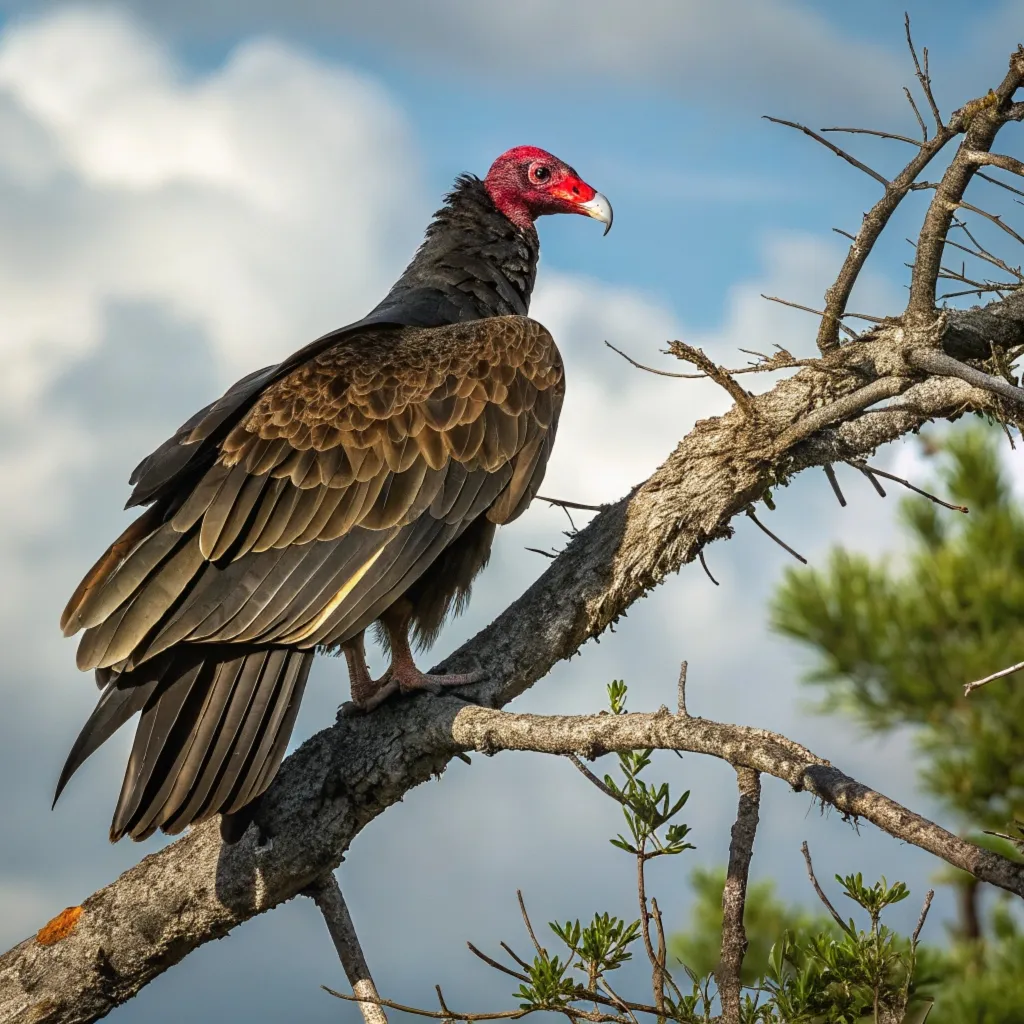
Turkey Vultures may not be songbirds but play an essential role as nature’s cleanup crew.
- Size & Appearance: Large black body with a bald red head and pinkish bill.
- Behavior: They use their keen sense of smell to locate carrion from great distances.
- Habitat: Found soaring over open areas like fields or highways.
Their soaring flight pattern is a key identifier—watch for their wobbling glide! Turkey Vultures help maintain ecological balance by cleaning up animal remains.
Turkey Vultures are often misunderstood but play a crucial ecological role in Florida’s ecosystems. Their ability to consume carrion without contracting diseases makes them natural sanitizers, helping to prevent the spread of pathogens.
This unique adaptation highlights the importance of scavengers in maintaining environmental health. By removing decaying animals, Turkey Vultures contribute to nutrient cycling and help keep ecosystems clean and balanced.
The flight patterns of Turkey Vultures are a marvel of avian aerodynamics. Their distinctive V-shaped wing position, known as a dihedral, allows them to soar effortlessly for hours, using thermal updrafts to gain altitude with minimal energy expenditure.
This efficient flight strategy enables them to cover vast areas in search of food, making them excellent indicators of ecosystem health across wide ranges.
Observing Turkey Vultures in flight not only offers a chance to appreciate their graceful movements but also provides insights into air currents and atmospheric conditions that shape Florida’s weather patterns.
7. American Crow vs. Common Raven

Distinguishing between these two large black birds can be tricky but rewarding:
| Feature | American Crow | Common Raven |
|---|---|---|
| Size | Smaller (17–21 inches) | Larger (24–27 inches) |
| Tail Shape | Straight across | Wedge-shaped |
| Call | “Caw-caw” | Deep “gurgle” |
Both species are intelligent and highly adaptable to human environments. Their problem-solving skills make them fascinating subjects for observation.
American Crows and Common Ravens are often confused due to their similar appearance, but each species possesses unique characteristics that set them apart. Crows are more prevalent in Florida, adapting well to urban and suburban environments.
Their intelligence is well-documented, with studies showing they can use tools, recognize human faces, and even hold “funerals” for their dead. This cognitive complexity makes them intriguing subjects for both casual observers and scientific researchers.
While Common Ravens are less common in Florida, their presence in certain areas of the state offers a chance to compare these two corvid species. Ravens are known for their larger size, more solitary nature, and deeper, more varied vocalizations.
Both crows and ravens play important roles in ecosystems as opportunistic feeders and scavengers. Their adaptability to human-altered landscapes demonstrates the resilience of wildlife in the face of urbanization.
Observing the behaviors and interactions of these intelligent birds can provide valuable insights into avian cognition and social structures.
8. Conservation Spotlight: Florida Scrub-Jay

The Florida Scrub-Jay stands out as the only bird species endemic to Florida. Though not entirely black, its unique status warrants mention.
- Appearance: Blue-gray plumage with a whitish forehead.
- Conservation Status: Federally listed as threatened due to habitat loss.
- Behavior: Lives in family groups that cooperate to protect territory.
Efforts like controlled burns aim to preserve their oak-scrub habitats. Protecting this species ensures biodiversity within Florida’s ecosystems remains intact.
The Florida Scrub-Jay’s conservation story highlights the challenges faced by endemic species in rapidly developing areas. As Florida’s population grows, the scrub habitats these birds depend on are increasingly fragmented or lost to development.
Conservation efforts for the Florida Scrub-Jay serve as a model for habitat preservation, demonstrating how targeted interventions can make a significant difference for threatened species.
These efforts not only benefit the Scrub-Jay but also protect a unique ecosystem that supports a variety of other specialized plants and animals.
Research on Florida Scrub-Jays has provided valuable insights into avian behavior and ecology. Their cooperative breeding system, where young birds help their parents raise subsequent broods, offers a fascinating example of social behavior in birds.
This system has implications for understanding the evolution of altruism and family dynamics in animal societies.
By studying and protecting Florida Scrub-Jays, scientists and conservationists are not only working to save a unique species but also uncovering important principles of ecology and evolution that can inform broader conservation strategies.
FAQs
What is the most common black bird in Florida?
The Common Grackle is one of the most frequently seen black birds in Florida due to its adaptability to various habitats including urban areas, parks, and agricultural lands.
How can I attract black birds to my yard?
To attract black birds like Red-winged Blackbirds or Common Grackles, provide food sources such as black oil sunflower seeds, cracked corn, and millet. Set up platform feeders or scatter seed on the ground. Having water sources and native plants can also help attract them.
Are all black birds aggressive?
Not all black birds are aggressive, but some species like grackles may exhibit dominant behavior at feeders. Red-winged Blackbirds can be territorial during breeding season. However, many black bird species coexist peacefully with other birds.
Why do some black birds appear shiny?
The iridescent appearance of birds like Common Grackles is due to microscopic structures on their feathers that reflect light differently, creating a shimmering effect especially noticeable in sunlight.
How can I identify different species of black birds?
Look for distinguishing features like size, shape, eye color, and any patches of color (like the red shoulders on Red-winged Blackbirds). Pay attention to habitat, behavior, and vocalizations as well. Using a field guide or bird identification app can be helpful for beginners.

Joyce is the passionate founder of Chirping Hearts, a website dedicated to sharing her love for birds and providing valuable information about avian life. With a background in ornithology and years of experience in birdwatching, Joyce aims to inspire others to appreciate the beauty and diversity of birds. Through her engaging articles and guides, she hopes to foster a community of bird enthusiasts who share her enthusiasm for these incredible creatures. When she’s not writing, Joyce enjoys exploring nature trails and observing birds in their natural habitats.
